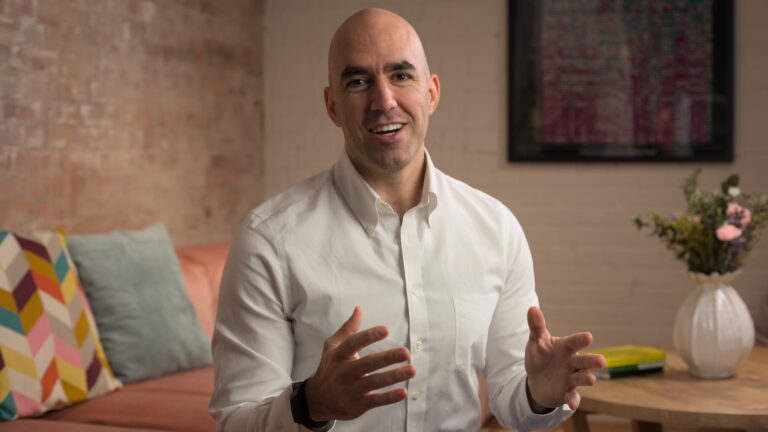Season 5: Innovating for impact
Navigating the path to innovation

Understanding your target audience is essential for success. But what if you’re a small business and lack a dedicated research team? Fear not, for discovering everything you need to know about the people you want to serve is within reach for every team and company, regardless of your size or the resources you have available. It all begins with a simple yet powerful act: asking questions.
TRY THIS:
Before we dive into the creative process, take a moment to brainstorm the questions you wish you had answers to.
Involve everyone on your team – from finance leads to administrative assistants. Each perspective brings valuable insights that can shape your understanding of the consumer landscape. The more diverse the input, the richer the questions and the clearer the path forward.
It’s helpful to have a set of answerable questions that is available to anyone in the organisation.
1. Identify themes of interest
To narrow down the universe of questions that you could ask, start by thinking of thematic areas that may be of interest to the business like company priorities for the year ahead, or product development, marketing, sales, etc.
2. Develop questions under each theme or area
Think of some questions under each theme, write them down, then prioritize and refine those which most closely relate to the theme. For example, let’s say you want to find out more about consumer trends in financial services you could ask questions like, “How has consumption and usage of mobile peer-to-peer payment apps like Cash App, Venmo, PayPal and Zelle impacted traditional brick-and-mortar banks?”
Once you have your questions, it’s time to seek answers. While various methods exist, one approach stands out as particularly effective: engaging directly with your target audience. Yes, that’s right – go out and talk to them! You don’t need to be a seasoned journalist to strike up a conversation; all it takes is genuine curiosity and a willingness to listen.
Start with an open-ended question. These open questions can be taken in any direction based on the thoughts and feelings of the person responding. An example of an open-ended question is, “What are your thoughts about our most recent marketing campaign on social media for the launch of our ABC solution?” In contrast, a closed-ended question limits the responder to a “yes” or “no” answer and is therefore known as a leading question. For example, “Did you like our most recent social media marketing campaign?”
After you ask that first, open-ended question, let the conversation flow naturally. Resist the urge to persuade and instead, focus on understanding the person in front of you. Listen intently, observe their body language and ask probing questions to delve deeper into their thoughts and feelings. Remember, the magic is in the listening. And if you can’t do this in person, try other means like sending out a one-question survey via Google Forms to your social media accounts that customers can complete anonymously.
The insights gleaned from these conversations and surveys can be invaluable. They serve as a guiding light, illuminating the path forward in the innovation process. Whether it’s identifying unmet needs, uncovering pain points or gaining a deeper understanding of consumer preferences, the knowledge gained from direct engagement can inform every aspect of your product or service development.
But why is this approach so powerful? At its core, it’s about empathy – the ability to understand and share the feelings of another. By engaging directly with your target audience, you develop a deeper sense of empathy for their experiences, challenges and aspirations. This empathy forms the foundation of meaningful innovation, driving solutions that truly resonate with customers.
The benefits extend beyond product development. By fostering a culture of customer-centricity, organizations can build stronger relationships with their audience, enhance brand loyalty and ultimately drive business growth. In a world where customers’ preferences can change in an instant, staying connected to your audience is more important than ever.
So, how can you put this approach into action? Start by setting aside time for an initial customer engagement session. Whether that’s through focus groups, interviews or surveys, make it a priority to listen to your audience and incorporate their feedback into your decision-making process. And remember, it’s not just about gathering data – it’s about understanding the people behind the numbers. And it doesn’t have to be as formal as a focus group. You could simply reach out to some customers or potential customers to see if they can spare some time to speak on the phone. You might be surprised at how generous people are with their time, especially if they like the product you make or service you offer.
In conclusion, unlocking consumer insights is not a task reserved for big businesses. It’s a journey that every team can embark on, armed with nothing more than curiosity, empathy and a willingness to listen. By asking the right questions and engaging directly with your target audience, you can uncover invaluable insights that fuel meaningful innovation and drive business success. So, what are you waiting for? Start the conversation today and discover the transformative power of consumer engagement.


